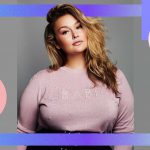Hunter McGrady
Model, Advocate, Designer, Writer
-
Behind The Curtain

She’s a poser. Hunter McGrady has been modeling since she was 16, but before she scored a coveted spot in the Sports Illustrated Swimsuit Issue—and a role on Hulu’s hit show Shrill— she had to hone in her mental health. We talked with Hunter about Hollywood, sex appeal, and what was going on behind the curtain.
How did you get your start modeling?
My mom was a model and my dad was an actor, so that world was always accessible to me…. but I wanted to be just like my mom. So at sixteen, I started modeling and then at nineteen, I started plus size modeling.
What was the change to plus size modeling like?
I went from a size 2 to a size 16… For me, [that transition] was difficult. It forced me to hone in my mental health. With the help of my family and my therapist, I was able to do that.
How did you feel about starting therapy?
I was hesitant about it because of the stigma… When you’re sixteen and you hear the word “therapy,” you think something is wrong with you. But nothing is wrong; you’re just taking care of yourself. I’m very open about depression and anxiety and spreading awareness. I want to talk about it so the next generation feels more comfortable.
Were your parents supportive?
Yes, my parents were in the business so they understood. I think having a support system is huge. If it’s not family, it can be friends, or even an online community. I created a hashtag #allworthy to curate a community on Instagram that allows us to lift each other up. Not everyone has a supportive family, but we all deserve to feel loved.
How has the fashion industry changed since you were sixteen?
I think that the industry, slowly but surely, is tiptoeing into inclusivity. We definitely have a long way to go. For example, we’re right off the heels of New York Fashion Week, and because I didn’t want to go to a show that wasn’t inclusive, I had to turn down a lot [of invitations and casting opportunities]. And it’s unfortunate, but hopefully that stance will have an impact. Things need to change.
How have you changed since you were sixteen?
I stopped worrying about my stretch marks, because that’s no fun. If all I’m going to do is worry about my body and my rolls, then that’s exhausting. I want to be able to live an enjoyable life. I want to try to live life colorfully. And now, I’m a big advocate for mental health. I work with the JED Foundation; they do a lot of suicide prevention work with teens and young adults.
What advice do you have for someone struggling with their mental health?
You just have to find out what works for you. For me, it’s words of affirmation, therapy, time alone reading. You have to take care of yourself first. Once I figured that out, my whole outlook changed.



